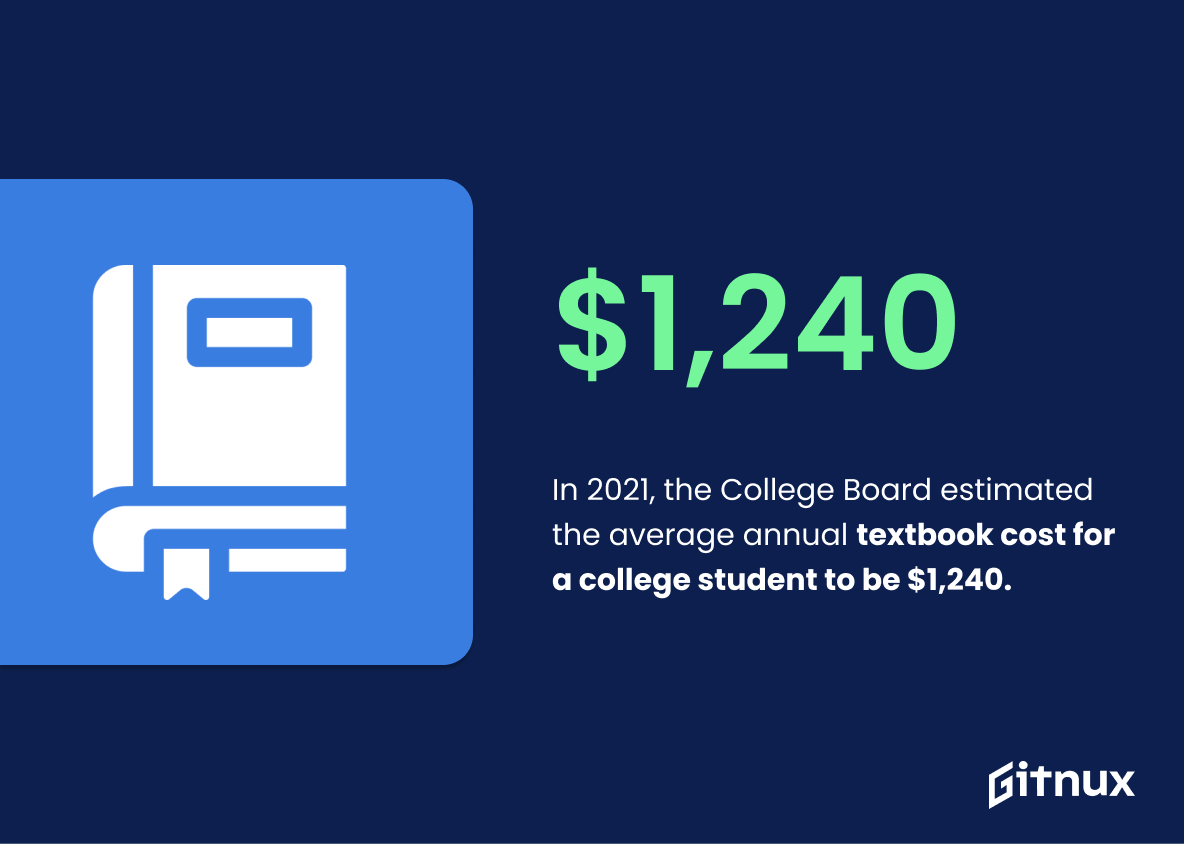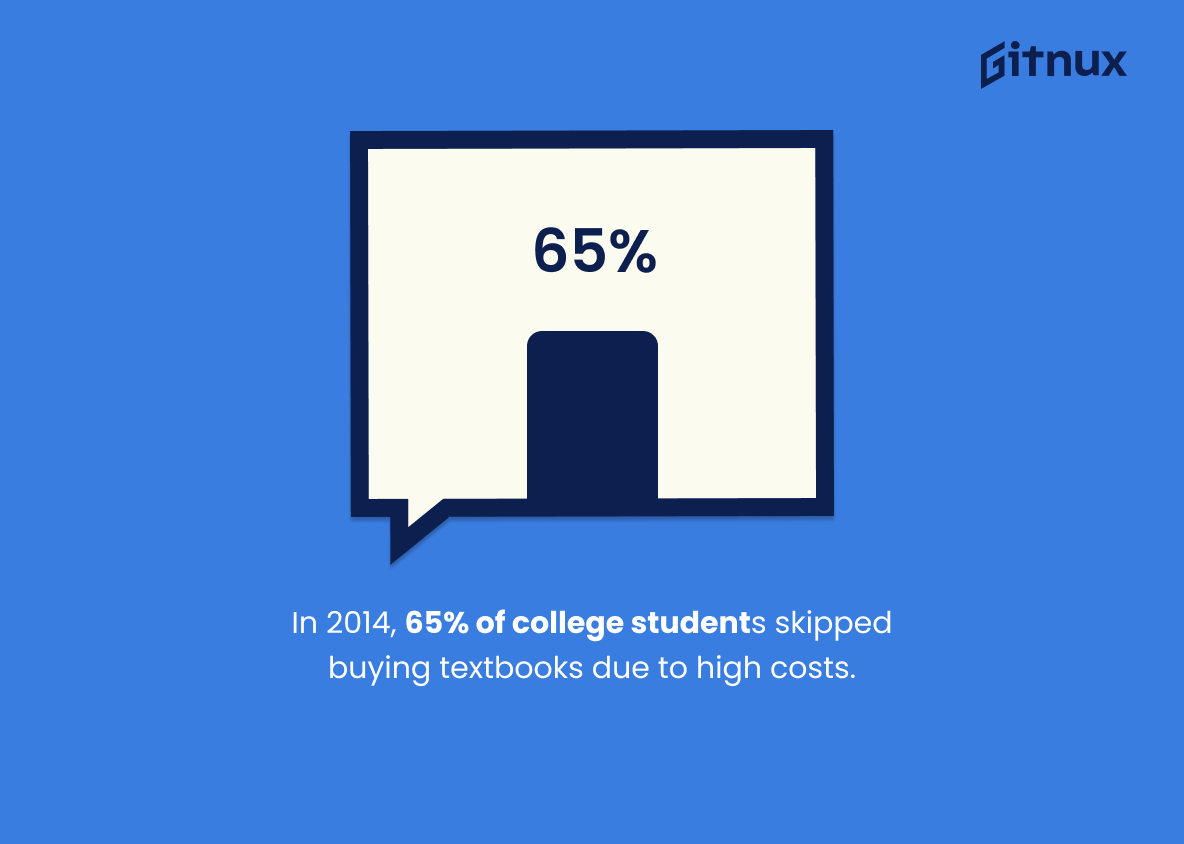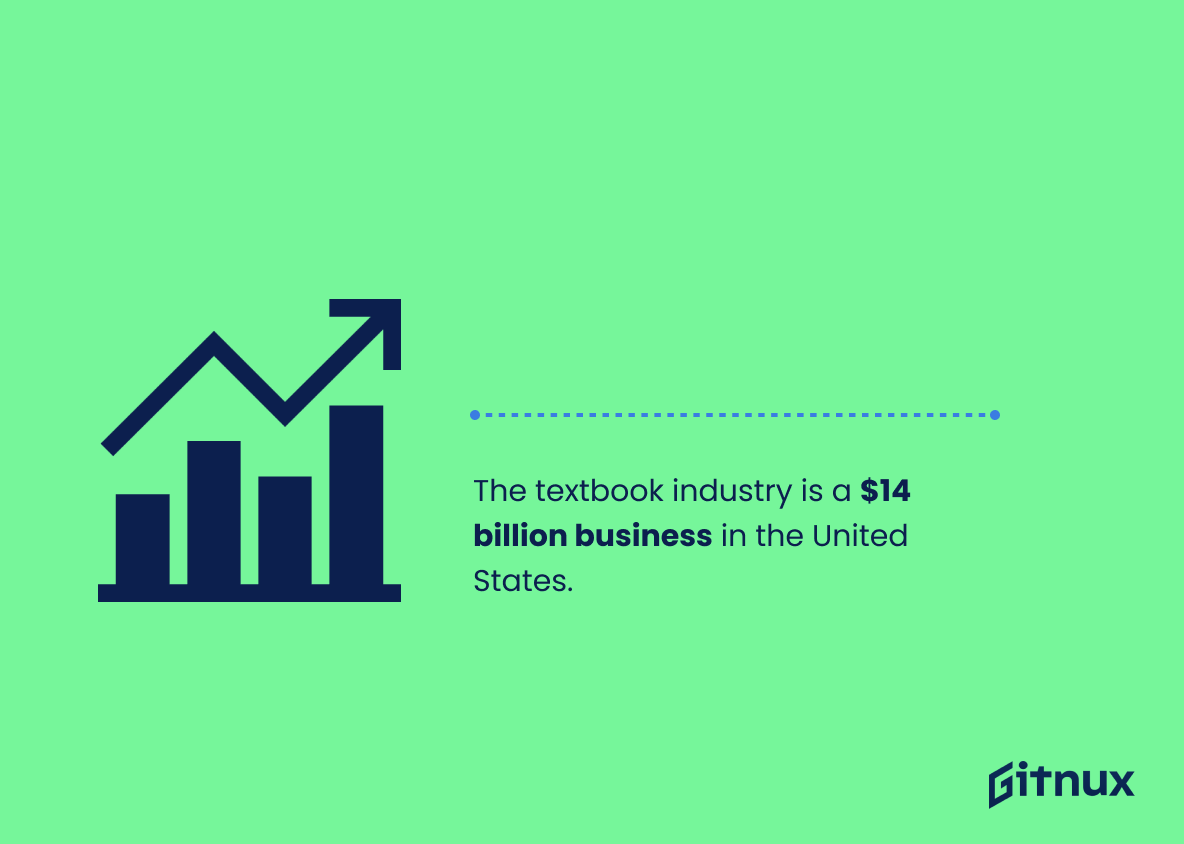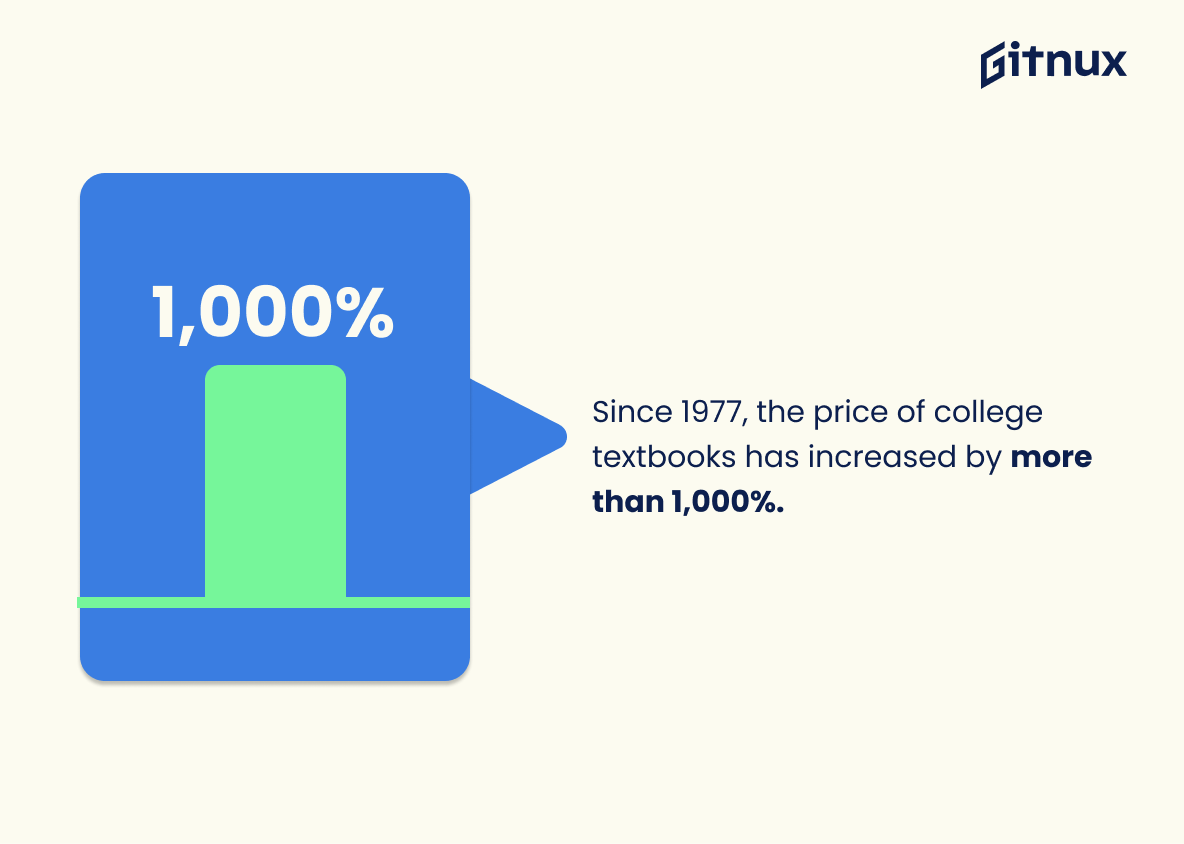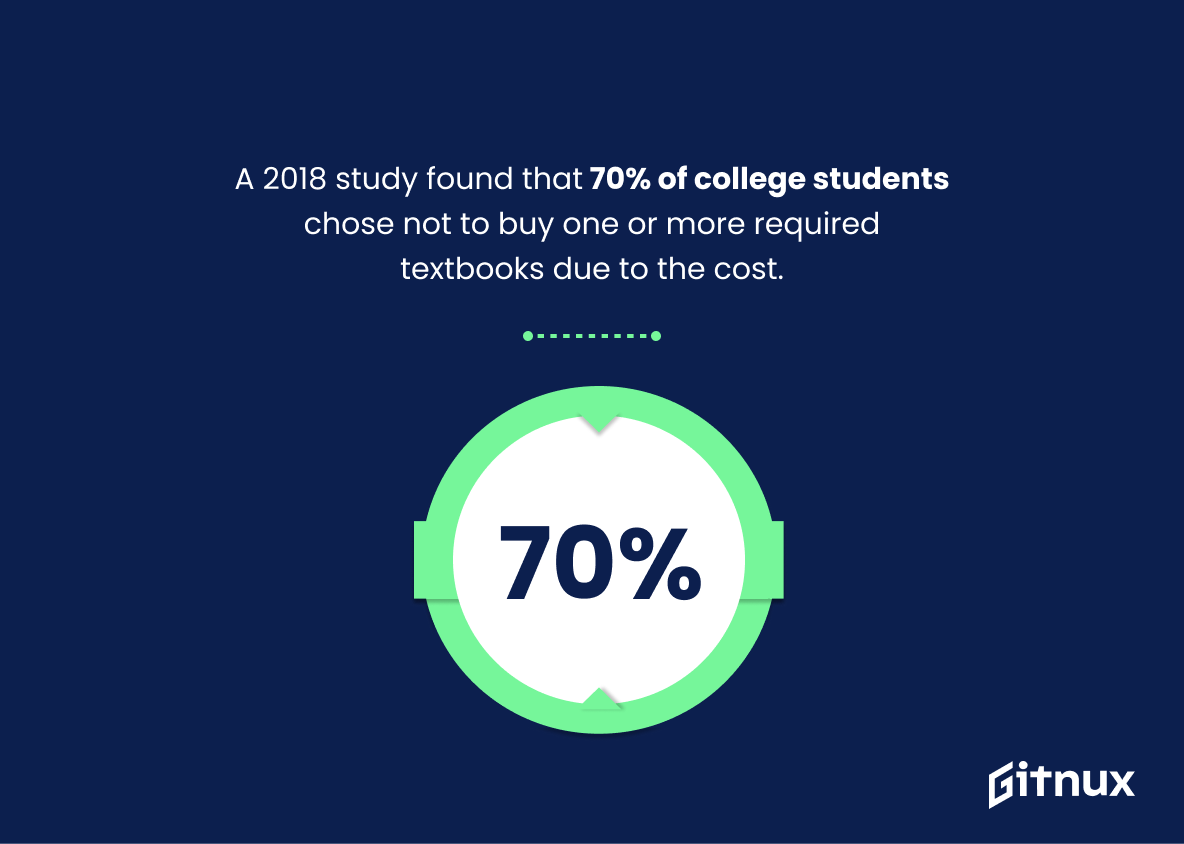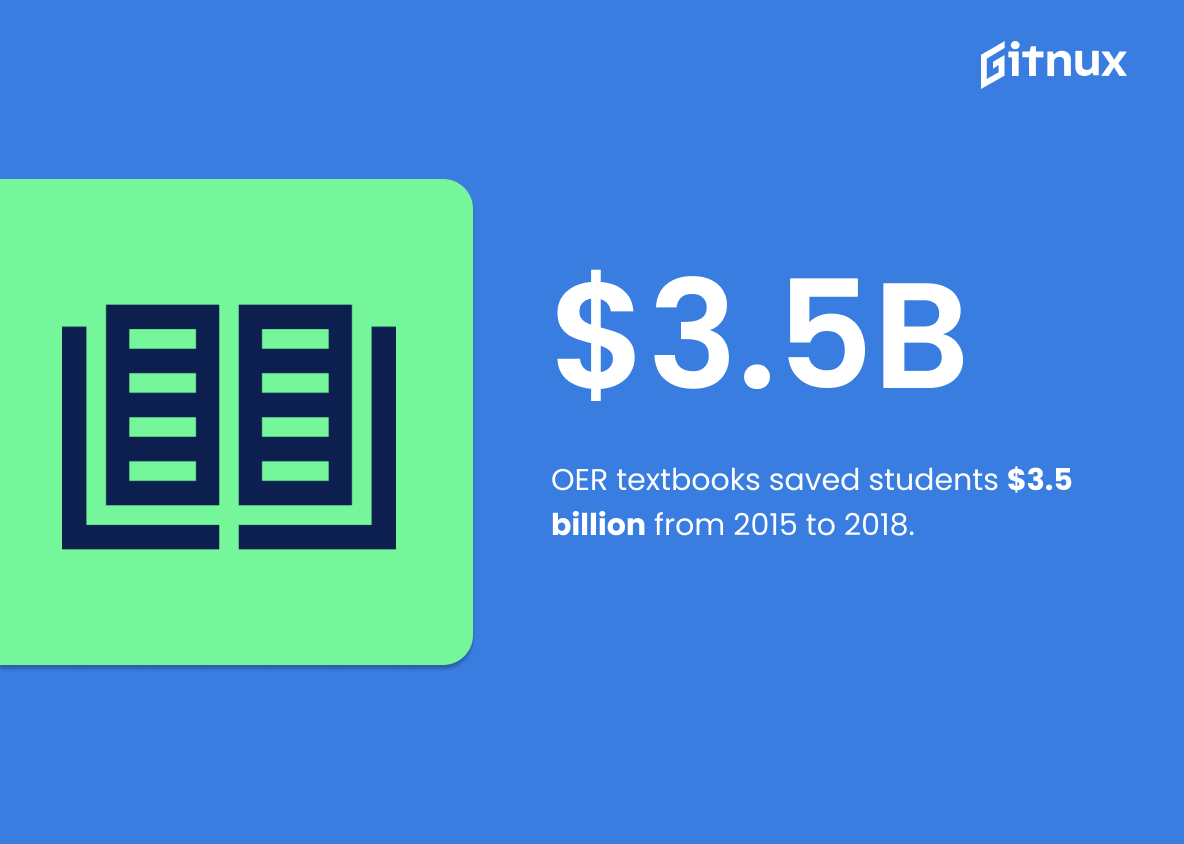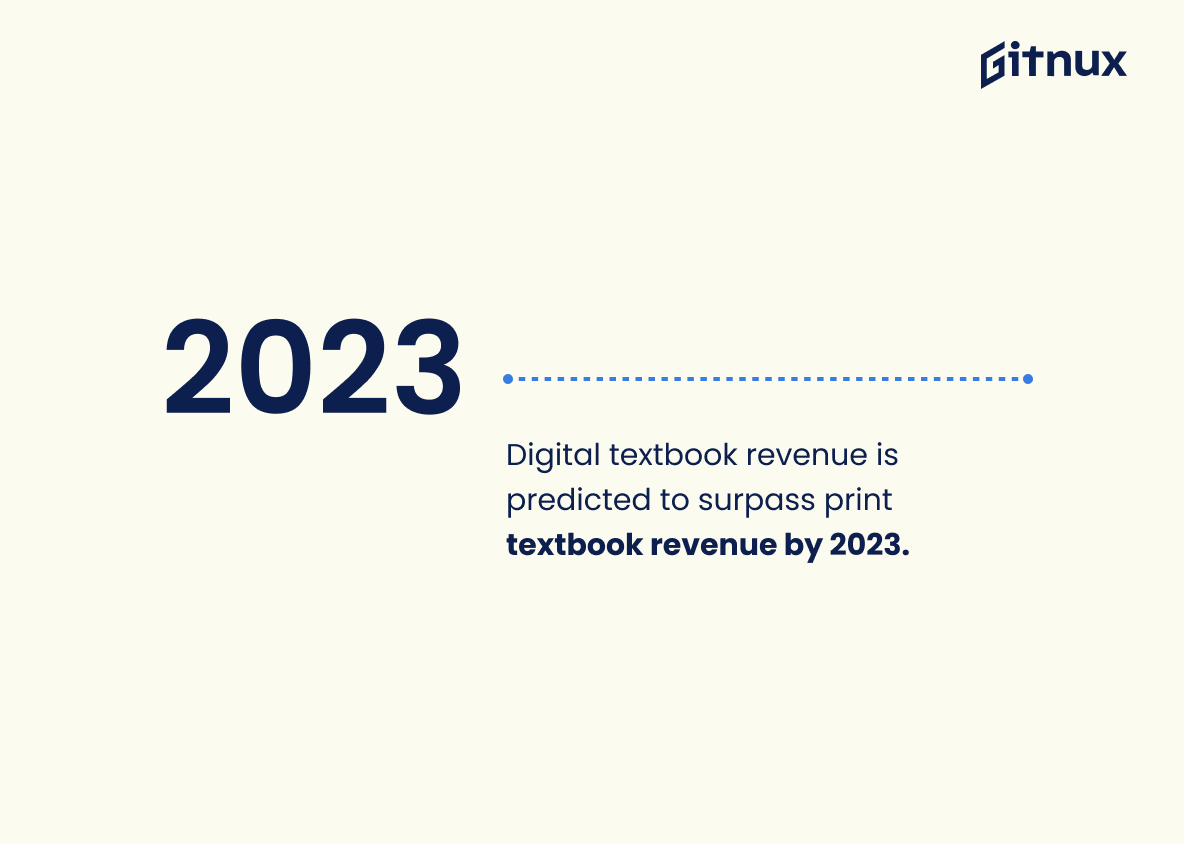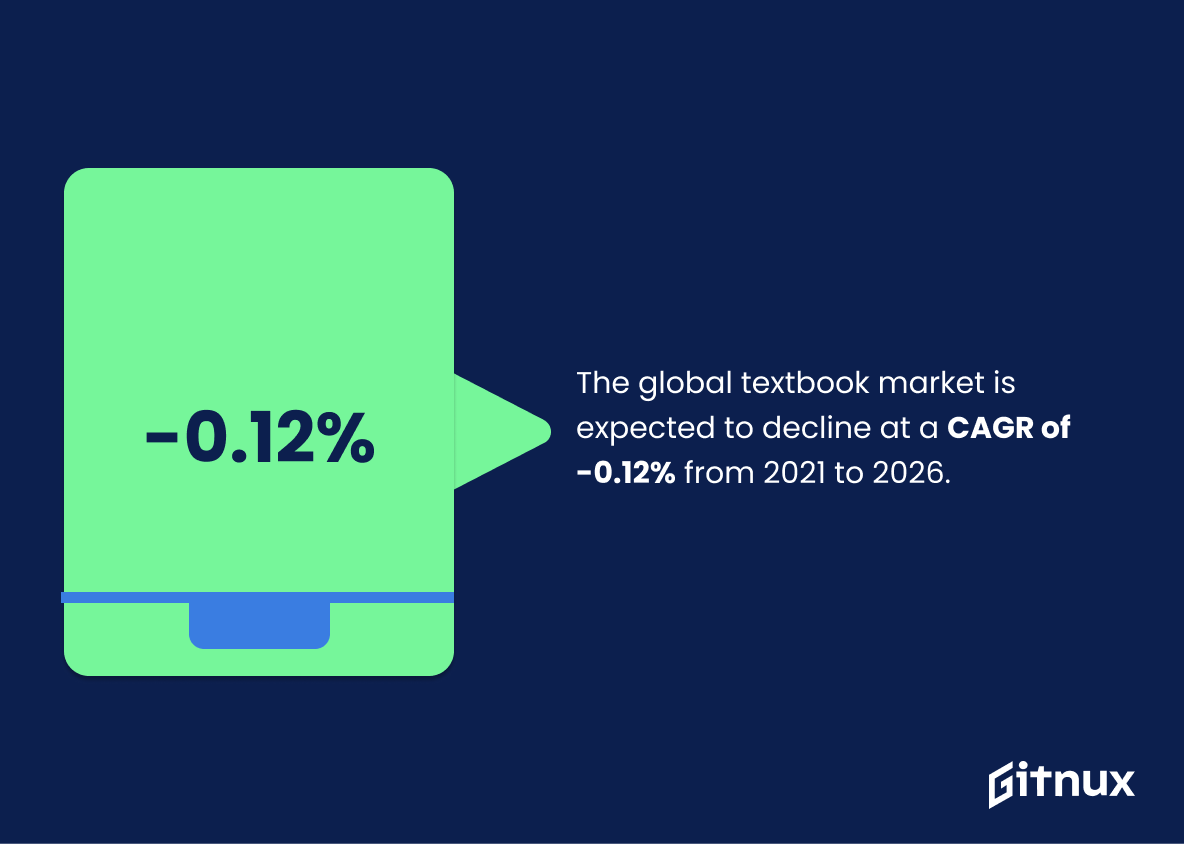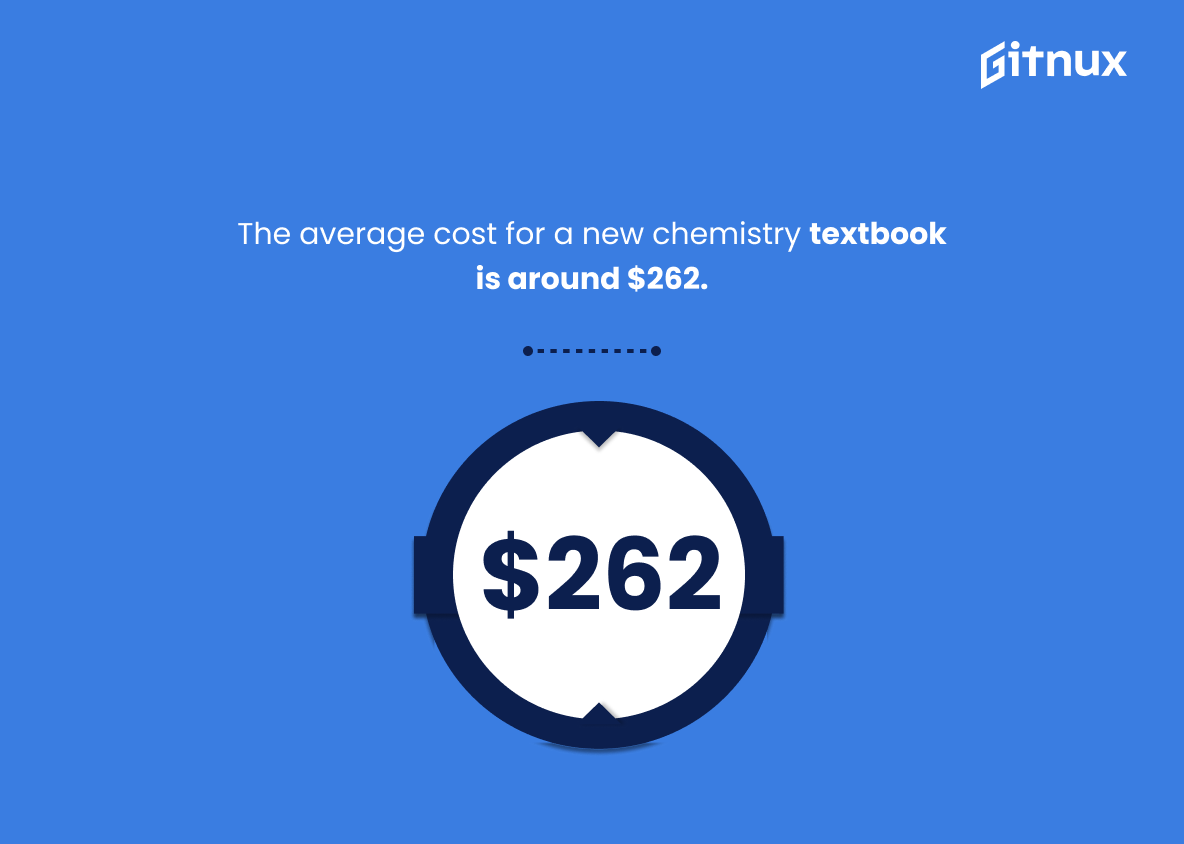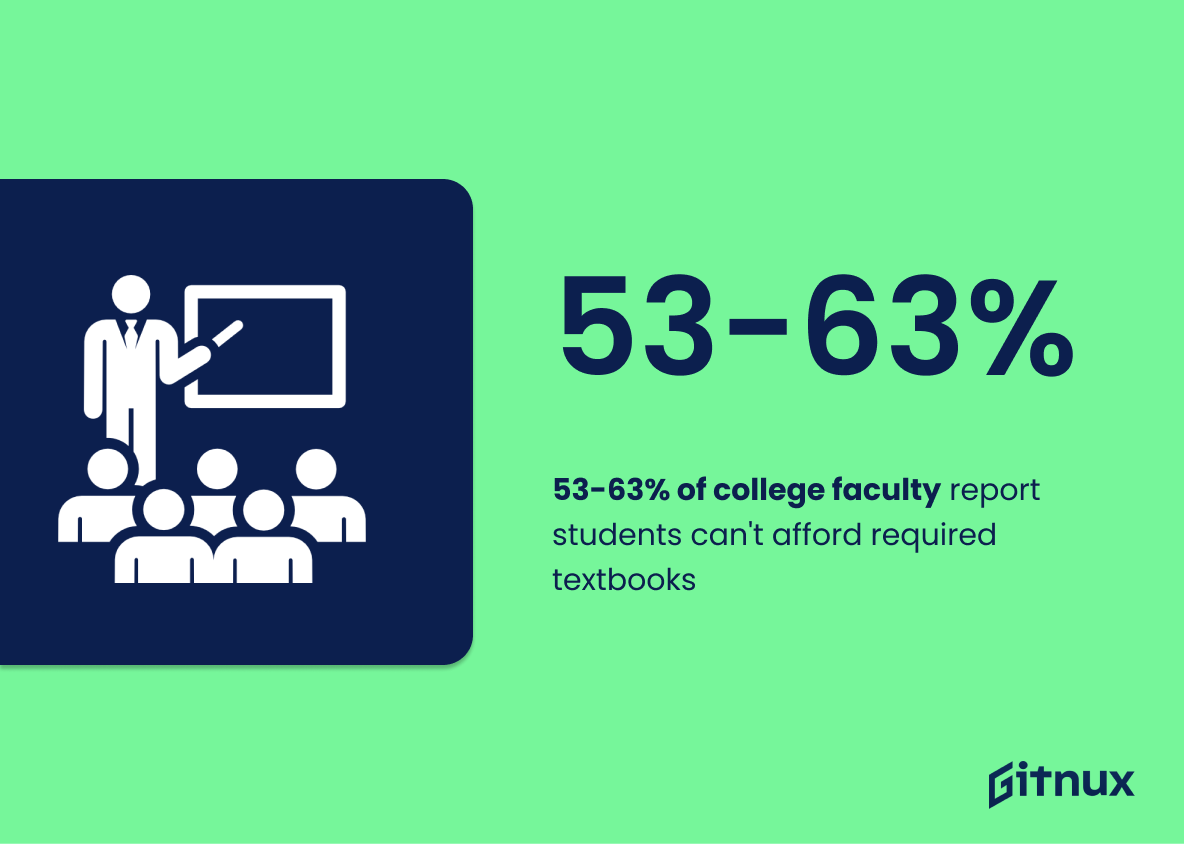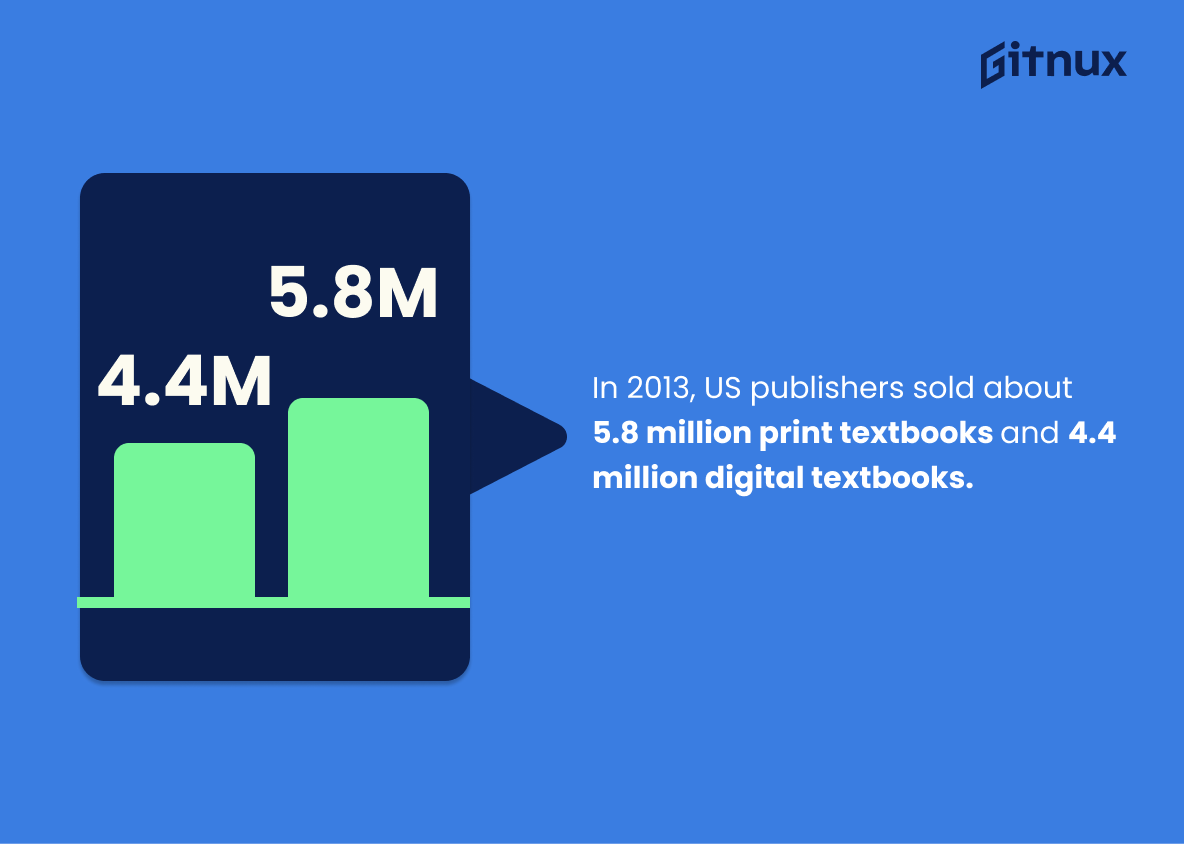Textbook prices have been a major concern for college students and their families for decades. According to the College Board, in 2021 the average annual textbook cost was estimated at $1,240. A 2020 report found that 99% of surveyed undergraduate students experienced financial difficulty purchasing textbooks. The US textbook industry is worth an estimated $14 billion annually, with prices having increased by more than 1,000% since 1977.
The average cost of a college textbook in 2019 was reported as being $153 while 65% of college students said they had decided against buying a textbook because it was too expensive according to 2014 data from NPR’s Is College Worth It? series. Furthermore, nearly 40% of surveyed college students said they felt the need to get a job just to pay for textbooks and 70% chose not to buy one or more required textbooks due to its high price tag in 2018 alone.
Open educational resources (OER) are helping push costs downward; between 2015-2018 OER saved student’s money on traditional texts totaling up around 3$5 billion dollars. Digital text book materials also saw an increase from 2$7 billion spent in 2018 compared with 3$0 billion spent last year – however this still doesn’t seem enough when 77 percent believe them overpriced or extremely so. In fact 85 percent even delayed starting courses due solely down these rising costs which has only become worse during COVID-19 where etextbooks sales rose 111%. With 62 percent using older editions instead there seems no end insight yet despite all this digital revenue is predicted surpass print books by 2023 but unfortunately global market decline rate remains steady at 0$.12 CAGR until 2026
This statistic is a stark reminder of the ever-increasing cost of college textbooks. It serves as a warning to students and parents alike that the cost of textbooks is not something to be taken lightly. With the cost of college tuition already skyrocketing, the 73% increase in textbook prices over the past decade is a significant burden for students and their families.
The average cost of a college textbook in 2019 was $153.
This statistic is a telling indication of the financial burden that college students face when it comes to purchasing textbooks. With the average cost of a college textbook in 2019 being $153, it is clear that textbooks are a significant expense for college students. This statistic is an important factor to consider when discussing the cost of college textbooks.
Textbook Price Statistics Overview
In 2021, the College Board estimated the average annual textbook cost for a college student to be $1,240.
This statistic is a stark reminder of the financial burden that college students face when it comes to textbooks. With the average annual cost of textbooks reaching $1,240, it is no wonder that many students are struggling to make ends meet. This statistic serves as a reminder of the importance of understanding the cost of textbooks and finding ways to reduce the financial burden.
A 2014 study showed 65% of college students said they had decided against buying a textbook because it was too expensive.
This statistic is a powerful indicator of the impact of textbook prices on college students. It demonstrates that the cost of textbooks is a major factor in students’ decisions about whether or not to purchase them, and that the majority of students are choosing not to buy textbooks due to their high cost. This statistic is an important piece of evidence in the discussion of textbook prices and their effect on college students.
The textbook industry is a $14 billion business in the United States.
This statistic is a testament to the sheer size and scope of the textbook industry in the United States. It serves as a reminder of the immense financial impact that textbooks have on the economy, and the importance of understanding the pricing dynamics of this industry.
Since 1977, the price of college textbooks has increased by more than 1,000%.
This statistic is a stark reminder of the ever-increasing cost of college textbooks. It paints a picture of a market that has seen prices skyrocket over the past four decades, leaving students with a hefty financial burden. It serves as a powerful illustration of the need for more affordable options when it comes to textbooks.
A 2018 study found that 70% of college students chose not to buy one or more required textbooks due to the cost.
This statistic is a powerful indicator of the financial burden that college students face when it comes to purchasing textbooks. It speaks to the reality that the cost of textbooks is a major factor in the decision-making process for many students, and that the cost of textbooks is a significant financial burden for many. This statistic is an important reminder of the need to make textbooks more affordable for college students.
Open educational resources (OER) textbooks saved students from spending $3.5 billion on traditional textbooks between 2015 and 2018.
This statistic is a testament to the power of open educational resources (OER) textbooks. By providing students with an alternative to traditional textbooks, OER textbooks have enabled students to save a staggering $3.5 billion over the course of three years. This is a remarkable achievement that speaks to the potential of OER textbooks to provide students with an affordable and accessible way to access educational materials.
In 2019, students spent $3 billion on digital textbook materials, an increase from $2.7 billion in 2018.
This statistic is a telling indication of the growing trend of students investing in digital textbook materials. It shows that students are increasingly turning to digital resources to supplement their learning, which is a testament to the convenience and affordability of digital textbooks. This statistic is an important piece of information for anyone looking to understand the current state of textbook prices.
Digital textbook revenue is predicted to surpass print textbook revenue by 2023.
This statistic is a game-changer for the textbook industry, as it indicates that digital textbooks are becoming increasingly popular and are likely to overtake print textbooks in the near future. This shift in the market could have a significant impact on the cost of textbooks, as digital textbooks are often cheaper than their print counterparts. As such, this statistic is an important one for anyone interested in the cost of textbooks and the future of the textbook industry.
The global textbook market is expected to decline at a CAGR of -0.12% from 2021 to 2026.
This statistic is a crucial piece of information for anyone interested in the textbook market, as it paints a picture of the future of the industry. It indicates that the market is expected to shrink over the next five years, which could have a significant impact on the prices of textbooks. This could be a major factor in the pricing strategies of publishers and retailers, and could have a direct effect on the cost of textbooks for students.
The average cost for a new chemistry textbook is around $262.
This statistic is a telling indication of the financial burden placed on students who are required to purchase textbooks for their chemistry courses. It serves as a stark reminder of the high cost of education and the need for students to find ways to save money on textbooks.
63% of faculty at two-year colleges and 53% of faculty at four-year colleges report that students cannot afford the required textbooks for their courses.
This statistic is a stark reminder of the financial burden that students face when it comes to purchasing textbooks for their courses. It highlights the fact that the cost of textbooks is a major obstacle for many students, particularly those attending two-year colleges, who may not have the same financial resources as those attending four-year colleges. This statistic is a call to action for educators, administrators, and policy makers to take steps to reduce the cost of textbooks and make them more accessible to all students.
During the COVID-19 pandemic, eTextbook sales increased by 111% in the United States.
This statistic is a telling indication of the impact the COVID-19 pandemic has had on the textbook industry. It shows that the demand for eTextbooks has skyrocketed during this time, likely due to the shift to online learning. This statistic is a powerful reminder of the importance of digital learning resources in the current climate.
85% of college students have delayed the start of their courses due to the cost of textbooks.
This statistic is a powerful indicator of the financial burden that textbooks place on college students. It demonstrates the extent to which the cost of textbooks can delay the start of courses, and highlights the need for more affordable options. This statistic is an important piece of evidence in the discussion of textbook price statistics, and serves to illustrate the real-world impact of the issue.
In 2013, US publishers sold about 5.8 million print textbooks and 4.4 million digital textbooks.
This statistic is a telling indication of the changing landscape of the textbook industry. It shows that digital textbooks are becoming increasingly popular, with a significant portion of the market now being taken up by digital versions. This shift in the market has implications for the pricing of textbooks, as digital versions are often cheaper than their print counterparts. As such, this statistic is an important factor to consider when discussing textbook price statistics.
Conclusion
The statistics presented in this blog post demonstrate the significant financial burden that college textbooks place on students. The average cost of a textbook has increased by 73% since 2006, and is now estimated to be $1,240 per year for an individual student. Furthermore, 99% of surveyed undergraduate students reported experiencing difficulty purchasing textbooks due to their high costs. This issue is further compounded by the fact that many students are forced to choose between buying required course materials or delaying their courses altogether because they cannot afford them. It appears clear from these figures that more needs to be done in order to make higher education more accessible and affordable for all individuals regardless of income level.
References
0. – https://www.insidehighered.com
1. – https://www.bigfuture.collegeboard.org
2. – https://www.motherjones.com
3. – https://www.uww.edu
4. – https://www.technavio.com
5. – https://www.businesswire.com
6. – https://www.nces.ed.gov
7. – https://www.digitalbookworld.com
8. – https://www.npr.org
9. – https://www.publishingperspectives.com
10. – https://www.cnbc.com
11. – https://www.onlineschoolscenter.com
12. – https://www.spiedigitallibrary.org
13. – https://www.scholarworks.boisestate.edu
14. – https://www.edtechmagazine.com
